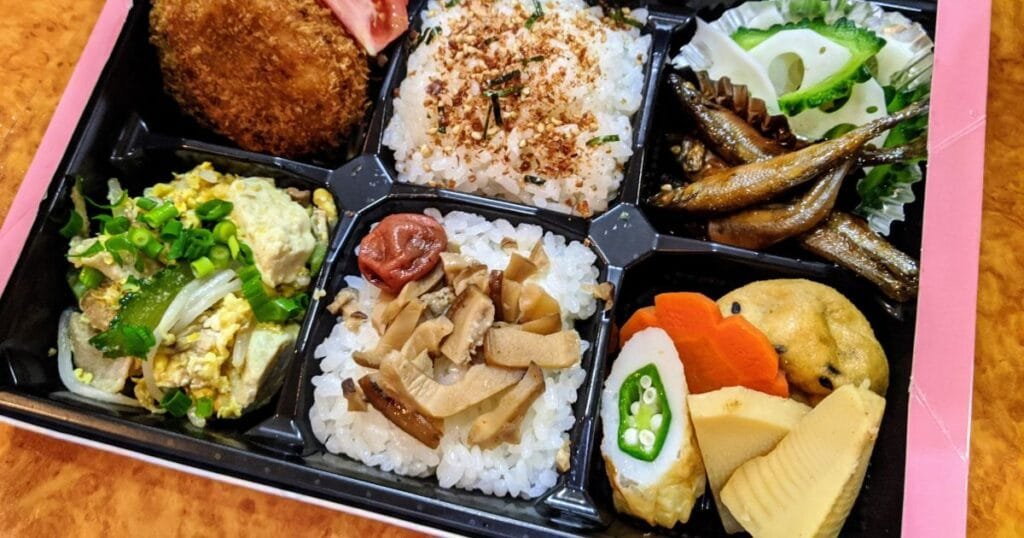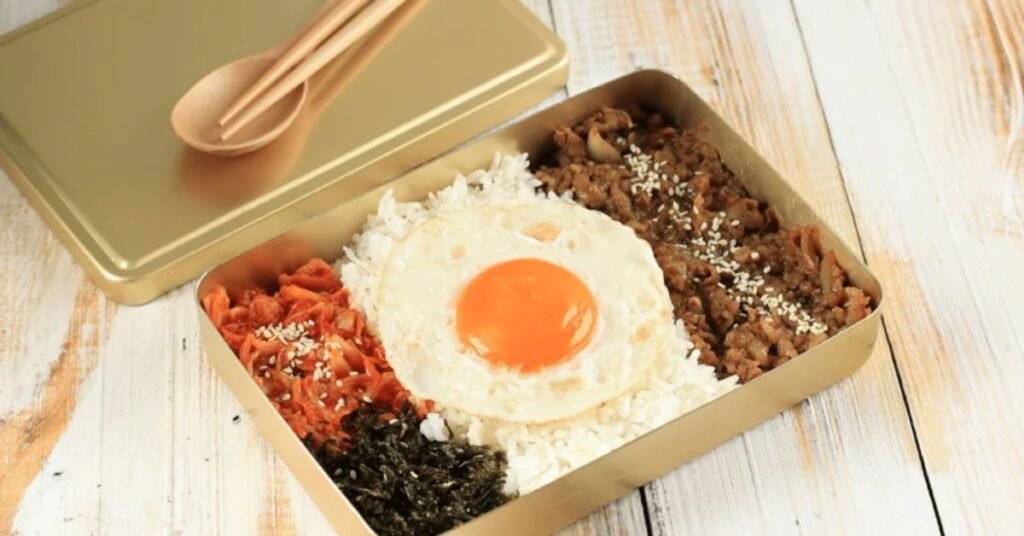Dosirak (도시락) is the Korean word for lunchbox. It’s more than a meal. It is a little box of love. Traditionally, dosirak includes steamed rice, banchan (side dishes), and a main protein. Each box holds a complete, balanced meal. The flavors and textures work well together, making it both tasty and satisfying.
Korean moms pack dosirak with love for their child. These lunchboxes brim with comforting, wholesome meals. Every dosirak overflows with care. It’s food made with love, not just ingredients.
Dosirak usually includes a mix of textures and colours. It often includes fluffy rice, crispy kimchi, tender bulgogi, and a rolled omelette. Korean moms artfully arrange each item to create harmony. Every bite delivers perfect balance and satisfaction.
Korean dramas and Squid Game made Dosirak more popular worldwide. Now, it stands as a symbol of Korean food culture.
Total Cooking Time—1 hour 15 minutes
- Cooking rice in a rice cooker: ~25–30 minutes
- Slicing and frying Spam or tofu: ~10 minutes
- Frying eggs: ~5 minutes
- Blanching spinach and seasoning: ~5 minutes
- Stir-frying fish cakes or anchovies: ~8–10 minutes
- Assembling the lunchbox: ~5–7 minutes
Table of Contents
How to Make Korean Dosirak (도이락) Lunchbox Recipe
Ingredients
- Korean short-grain rice – 1 cup
- Water – 1½ cups
- Luncheon meat (Spam) – 340g or firm tofu (vegetarian) – 340g
- Large eggs – 2
- Roasted nori (seaweed sheets) – 2
- Sesame seeds – ½ tsp
- Sugar – pinch
- Sesame oil – 1 tsp
Banchan (Side Dishes)
- Stir-fried fish cakes – 1 cup or anchovies – 1 cup
- Seasoned spinach – 1 cup
- Kimchi – 410g
Prepared Method
First Step
Clean and wash the rice well. Put rice in enough water in a rice cooker and cook until done.
Second Step
Cut the Spam into thin slices for the lunch meat. Heat oil in a pan on medium. When the oil is hot, add thin slices of Spam and fry until golden brown on both sides. Once fried, remove from the heat.
Third Step
Cut bite-sized tofu after draining. Then fry the tofu until golden. Additionally, toss with soy sauce and gochujang for an extra layer of flavour. Fry the eggs in any pan to your liking. Drain spinach after one minute in boiling water. Then mix the drained spinach well with a bit of sesame oil, minced garlic, and salt. Slice the fish cakes and stir-fry with onion, soy sauce, gochujang, and a pinch of sugar.
Fourth Step
Layer cooked rice as the base of the lunchbox. Arrange pieces of Spam or tofu on one side. Then add the kimchi, seasoned spinach, and fried fish cakes or anchovies one at a time. Add a fried egg and sesame seeds. Include nori sheets on the side or cut them into strips to put on top.

Nutrition Facts (Per Serving)
Calories: 650–700 kcal
- Protein: 28–32 g
- Total Fat: 35–40 g
- Fibre: 3–4 g
- Cholesterol 220–250 mg
Shake the Dosirak gently to mix the ingredients, then enjoy. You can customize with other banchan, like pickled radish or fried zucchini, if you want. This dosirak bursts with bold flavours and wholesome nutrition. Enjoy your delicious Korean lunchbox by making a dosirak today!
What is Dosirak?
Dosirak (도이락) means lunchbox in Korean. A dosirak features banchan (Korean side dishes) with rice. This lunchbox strikes a balance between nutrition and traditional Korean flavours.
Is Bulgogi Spicy?
Bulgogi sizzles as Korea’s iconic grilled delight. The grill sears thinly sliced beef marinated in a sweet and flavorful marinade. This beef bulgogi is usually not spicy.
Do Soba Noodles have Egg?
Traditional soba noodles are produced from buckwheat flour. However, it is primarily a Japanese dish. But it is very popular in Korea. In Korea, it is better known as memil guksu (메밄국수). You can add any egg to the soba noodles if you want.



